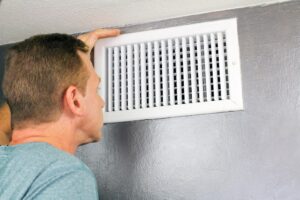When your child has asthma, you soon find yourself emerged in what feels like a whole new world — one where everyday activities in Easton, Pennsylvania, from a community league soccer game to an afternoon playing in the snow, can turn deadly in a matter of minutes. The number of things you need to think about and prepare for can be overwhelming, and researching some topics, especially weather-related triggers, can be tricky. You’ll find articles explaining the dangers of cold, dry air right alongside studies highlighting the risks of weather that’s too hot or humid.
Still, understanding the relationship between asthma and temperature, humidity, and other environmental factors is crucial. Although no two children will have the exact same triggers or react to them with the same severity, there are some general principles every parent should know.
Temperature and Humidity
In the wake of frequent asthma attacks, what parents wouldn’t consider moving to make their child more comfortable? Unfortunately, if you’re looking for the best climate for asthma sufferers, there is no one-size-fits-all answer. Dry wind and cold air can be dangerous, but warmer climates come with their own risks — including thunderstorms and high humidity.
You can’t control outdoor temperatures and humidity, but you can manage these factors in your own home. Humidity in particular can affect the body in several surprising ways, so use a humidifier and/or dehumidifier to keep the relative humidity in your home within a comfortable range. High humidity means heavier air, which is more difficult to breathe, while low humidity can dry out your airways. Either can be difficult for asthma sufferers.
Your air conditioner alone (if properly sized) could be enough to counteract high humidity during summer months, or you may need to add a whole-home dehumidifier. During winter, you may find yourself with the opposite problem as the heat from your furnace dries out the air. In that case, a humidifier may be necessary.
Allergens and Irritants
For children with allergic asthma, allergens such as pollen and pet dander can be frequent triggers. In fact, if you study lists of the worst cities for asthma, you will notice that allergens and air pollution are recurring themes. Cities with poor (or poorly enforced) smoking laws, high pollen counts, or lots of smog often have the highest asthma rates.
Other common allergens include mold, cockroaches, dust mites, and rodents — all of which can make their way into your home. Even if you manage to minimize these allergens, there are other irritants to watch out for. Cigarette smoke, wood fires, strong odors or chemicals, and even dust particles can trigger an attack.
Fortunately, most airborne pollutants can be removed by an air purifier. Improved ventilation can also help with indoor air quality. Rather than relying on a portable air purifier, which can only affect one room at a time, consider investing in some whole-home indoor air quality solutions.
Other Factors to Consider
Finally, keep in mind that some environmental conditions are more likely to be dangerous in conjunction with aerobic activities. The threat may also be compounded by tangentially related circumstances. This is especially true of cold weather. Colds, sore throats, sinus infections, pneumonia, and the flu — all of which tend to strike during colder months — can trigger an asthma attack, as can exercising in cold air.
It’s also easy to mistakenly correlate an asthma attack with the weather when something else is at fault. Strong emotions can change your breathing enough to cause an attack, or an unrelated medicine or medical condition, such as acid reflux, could be to blame.
Although many factors affecting your child’s asthma are out of your control, you can and should take steps to improve the indoor air quality in your home. From high humidity to airborne allergens, if you need help making your home’s air more breathable, Sullivan Oil & Propane can help. Give us a call at (610) 810-3992. Our expert technicians can recommend and install the equipment you need to make your home a safe haven for your entire family.
Image provided by Shutterstock



